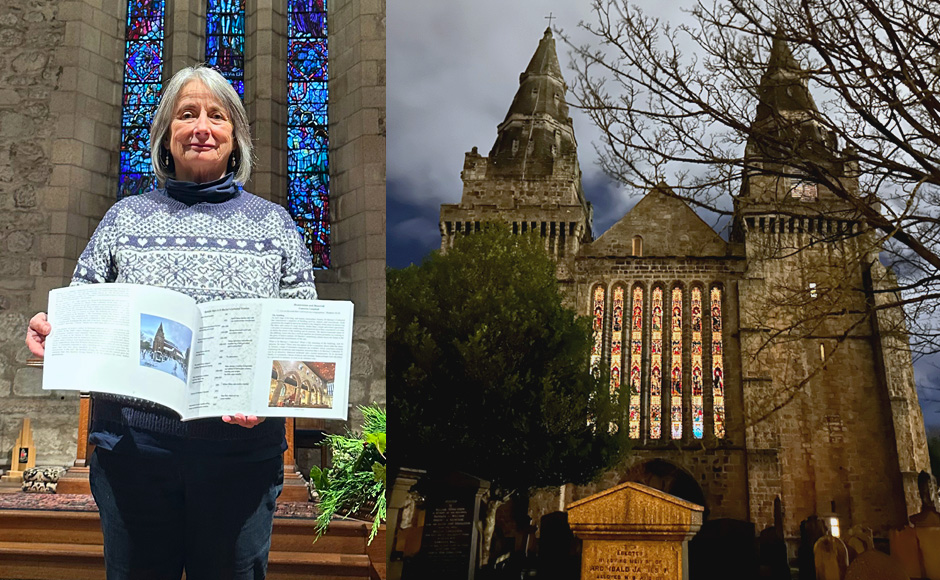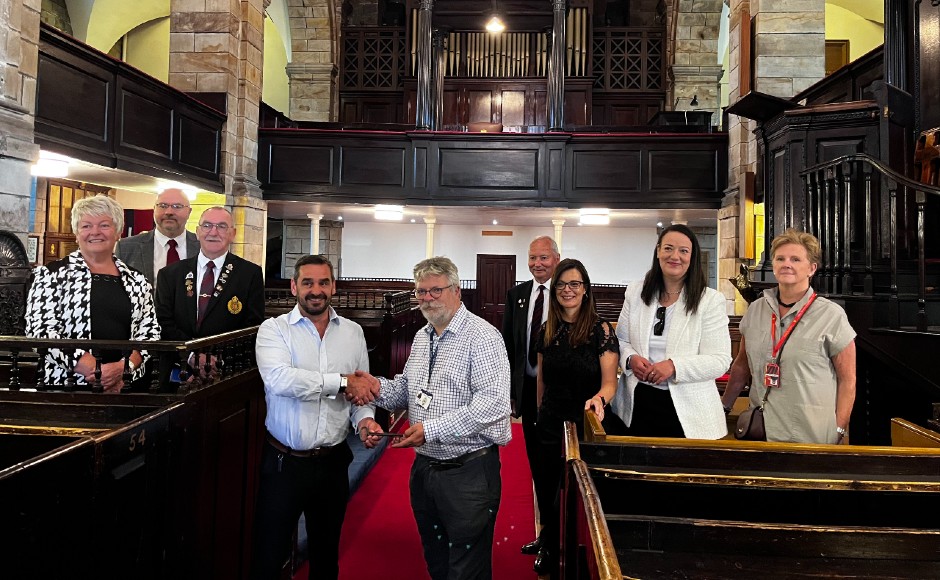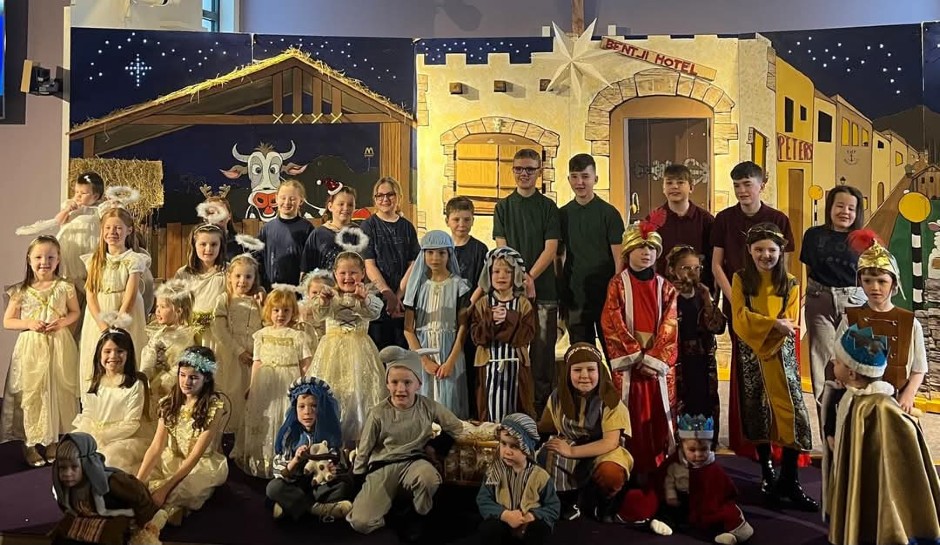Striking addition to Nativity scene at Aberdeen church
Published on 6 December 2023 3 minutes read
A "stunning" new addition to a nativity scene on display within an historic church in Aberdeen has been unveiled.
The cloth backdrop, known as a cyclorama, helps to accentuate the story of the birth of Jesus Christ, the true meaning of Christmas, at St Machar's Cathedral.
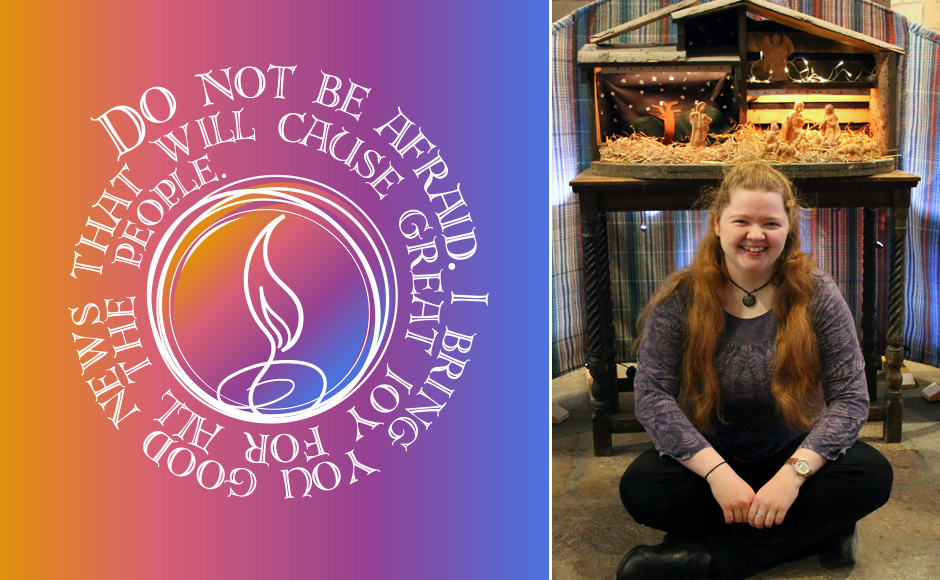
Each panel represents different characters and the colours that have been woven are drawn directly from the nativity scene incorporated in the east window of the church, designed by William Wilson.
The cyclorama was created by Rachel Birse, who is currently in her 4th year as a student of textiles at the University of Highlands and Islands in Lerwick on the Shetland Isles.
A native of Aberdeen and a familiar face in the choir at St Machar's when she's not studying, the 23-year-old was commissioned by the Friends of St Machar's group and wove the cyclorama from wool to make a traditional tweed on her own loom at her home in Lerwick.
Miss Birse said she "enjoyed working with the bright colours from Wilson's window and being able to weave older traditions with the new, telling the Christmas story in a fresh way".
She worked in partnership with craftsman and elder Michael Strachan to create a structure to hang the woven cloth and set the nativity scene with an intimate surround.
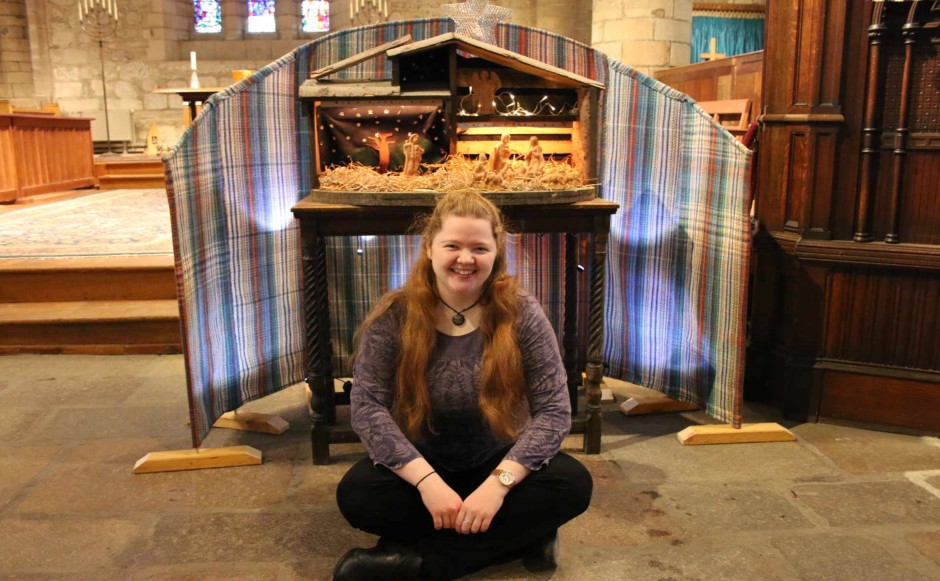
Fiona Kennedy OBE, honorary president of the Friends of St Machar's, said the group is "absolutely delighted" with the cyclorama, which has made the nativity scene a real centerpiece.
She described Miss Birse as "hugely talented" and said what she has achieved is "truly magical".
Rev Sarah Brown, minister of St Machar's Cathedral, said: "I am inspired by this wonderful addition to our seasonal decoration.
"Advent is a time to be reminded that light will always come to end the dark times and with such a lot of darkness around, the startling colours of this commission call us into a new space filled with hope and promise of what is yet to come.
"What better way to do this by encouraging young people to contribute to the wonder of the story we live by in the church?"
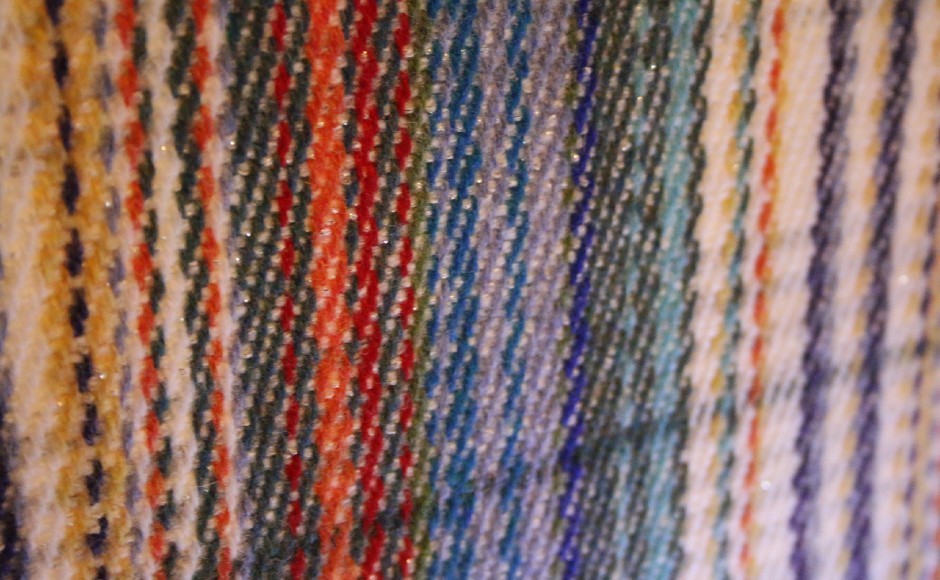
St Machar was a disciple of St Columba - an Irish abbot credited with introducing Christianity to Scotland - and the cathedral is named in his honour.
Located within the Old Aberdeen conservation area on a site with links to a place of worship dating back to around 580AD, it became a cathedral in the 1130s.
The building is famed for its twin towers, stunning 16th century heraldic ceiling and stained glass windows.
On sandstone columns, there are carved features of a merman, mermaid and leaves as craftsmen drew on fantasy as well as on nature to the glory of God.
A cathedral in name only, it is a fine example of a fortified kirk and the oldest building in active use in Aberdeen.
The Friends of St Machar sustain and safeguard the traditions of worship, friendship and the arts, providing an opportunity for everyone to be part of ensuring the unique and historic place of worship continues to be maintained and evolve with the times, whilst honouring the tradition of the past.
Open daily from 10am-4pm, the building is maintained entirely by the congregation and donations from the public and the Friends group support developments and maintenance in partnership with the Kirk Session.
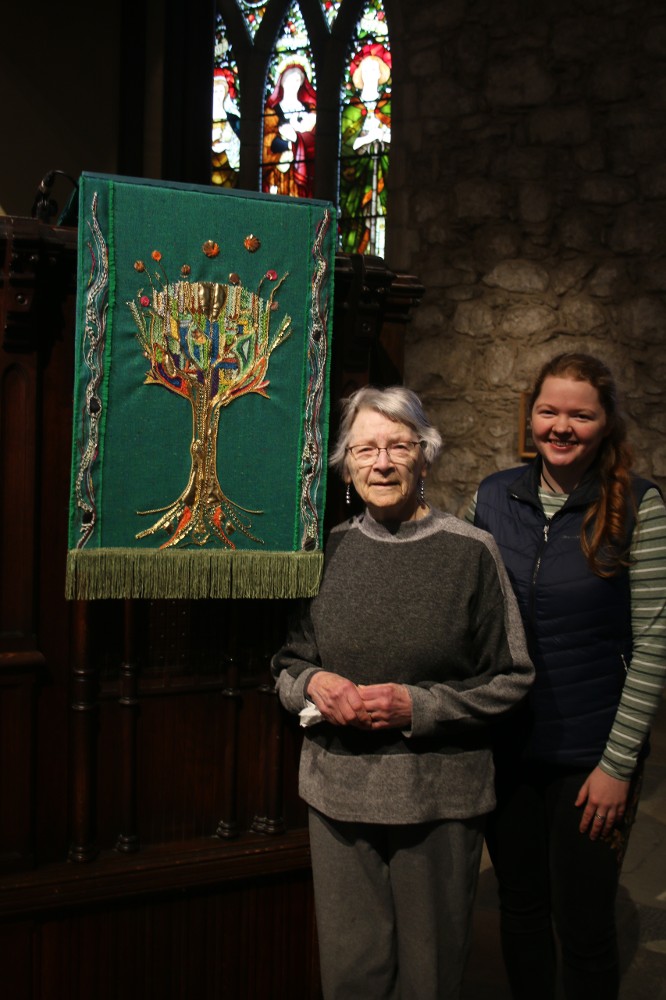
The cyclorama will be on display throughout Advent and the Christmas season.
Worship services are held each Sunday at 11am and 6pm and on Christmas Eve there will be a family Christingle service at 6pm and a Watchnight service at 11pm.
The cyclorama is the second commission that Miss Birse has been involved in at St Machar's Cathedral.
At the age of 19 she worked with artist Ruth Lough, who was 89 at the time, to produce an embroidered pulpit fall.
This piece was integral in her decision to undertake her current studies in textiles in Shetland.
Visitors to Edinburgh can see some of Miss Birse's creations on display.
She was selected from over 2,000 entries to exhibit her hand-woven textile pieces at the Scottish Landscape Awards Exhibition at the City Art Centre in Edinburgh.
Inspired by the colours of the land and sea and the changing lights and patterns of the water, they will be on display until March next year.
